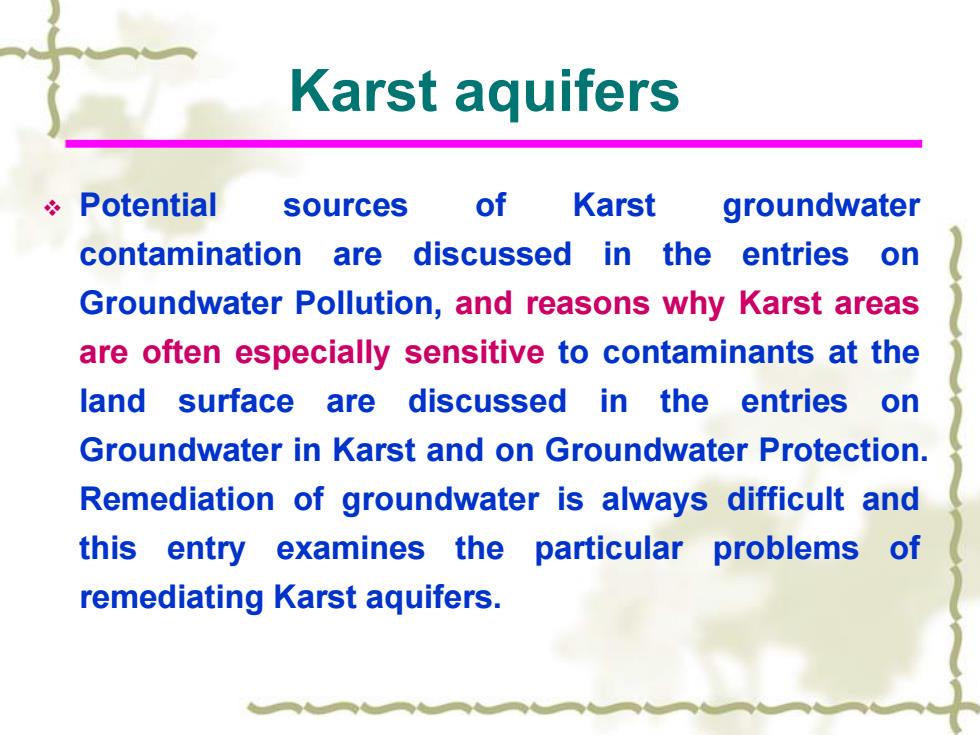
Karst aquifers Potential sources of Karst groundwater contamination are discussed in the entries on Groundwater Pollution,and reasons why Karst areas are often especially sensitive to contaminants at the land surface are discussed in the entries on Groundwater in Karst and on Groundwater Protection. Remediation of groundwater is always difficult and this entry examines the particular problems of remediating Karst aquifers
Karst aquifers Potential sources of Karst groundwater contamination are discussed in the entries on Groundwater Pollution, and reasons why Karst areas are often especially sensitive to contaminants at the land surface are discussed in the entries on Groundwater in Karst and on Groundwater Protection. Remediation of groundwater is always difficult and this entry examines the particular problems of remediating Karst aquifers
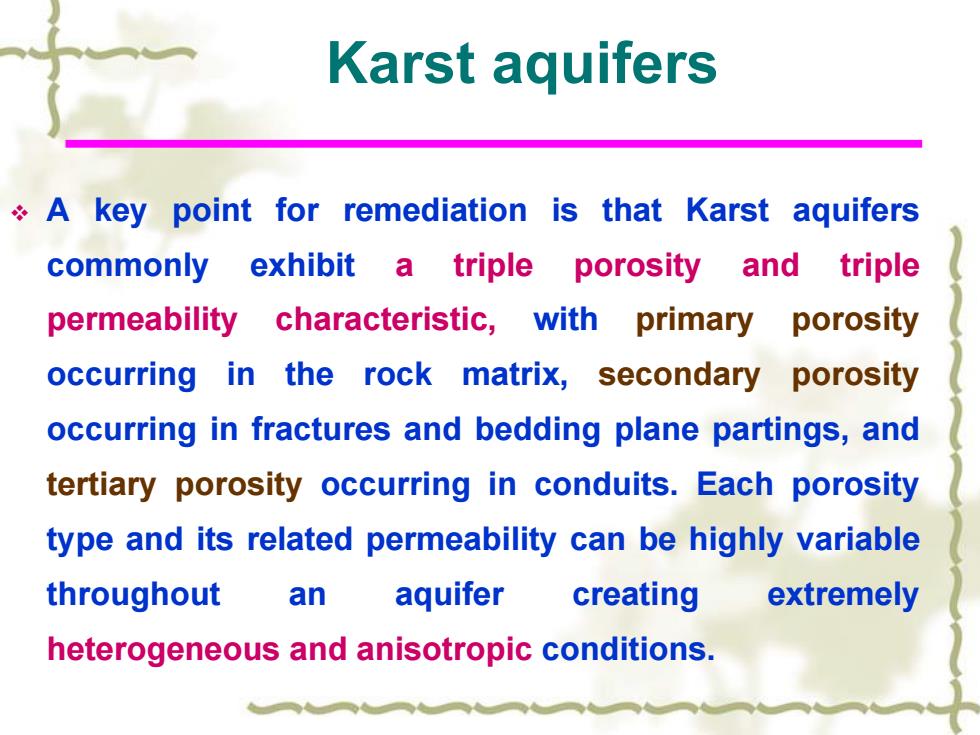
Karst aquifers A key point for remediation is that Karst aquifers commonly exhibit a triple porosity and triple permeability characteristic,with primary porosity occurring in the rock matrix,secondary porosity occurring in fractures and bedding plane partings,and tertiary porosity occurring in conduits.Each porosity type and its related permeability can be highly variable throughout an aquifer creating extremely heterogeneous and anisotropic conditions
Karst aquifers A key point for remediation is that Karst aquifers commonly exhibit a triple porosity and triple permeability characteristic, with primary porosity occurring in the rock matrix, secondary porosity occurring in fractures and bedding plane partings, and tertiary porosity occurring in conduits. Each porosity type and its related permeability can be highly variable throughout an aquifer creating extremely heterogeneous and anisotropic conditions
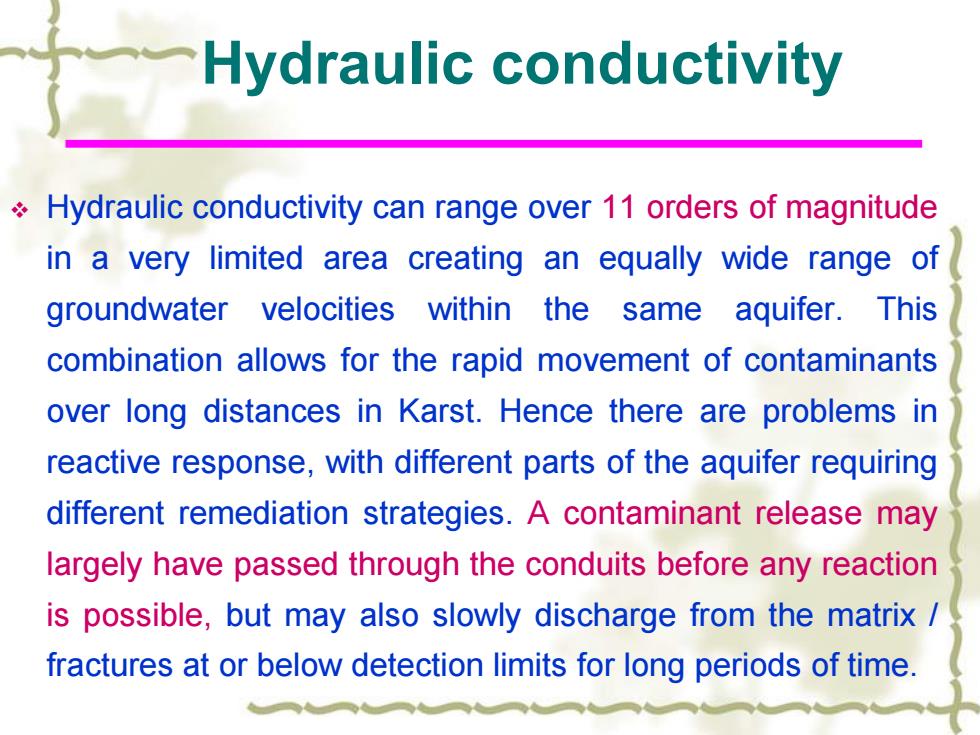
Hydraulic conductivity Hydraulic conductivity can range over 11 orders of magnitude in a very limited area creating an equally wide range of groundwater velocities within the same aquifer.This combination allows for the rapid movement of contaminants over long distances in Karst.Hence there are problems in reactive response,with different parts of the aquifer requiring different remediation strategies.A contaminant release may largely have passed through the conduits before any reaction is possible,but may also slowly discharge from the matrix fractures at or below detection limits for long periods of time
Hydraulic conductivity can range over 11 orders of magnitude in a very limited area creating an equally wide range of groundwater velocities within the same aquifer. This combination allows for the rapid movement of contaminants over long distances in Karst. Hence there are problems in reactive response, with different parts of the aquifer requiring different remediation strategies. A contaminant release may largely have passed through the conduits before any reaction is possible, but may also slowly discharge from the matrix / fractures at or below detection limits for long periods of time. Hydraulic conductivity
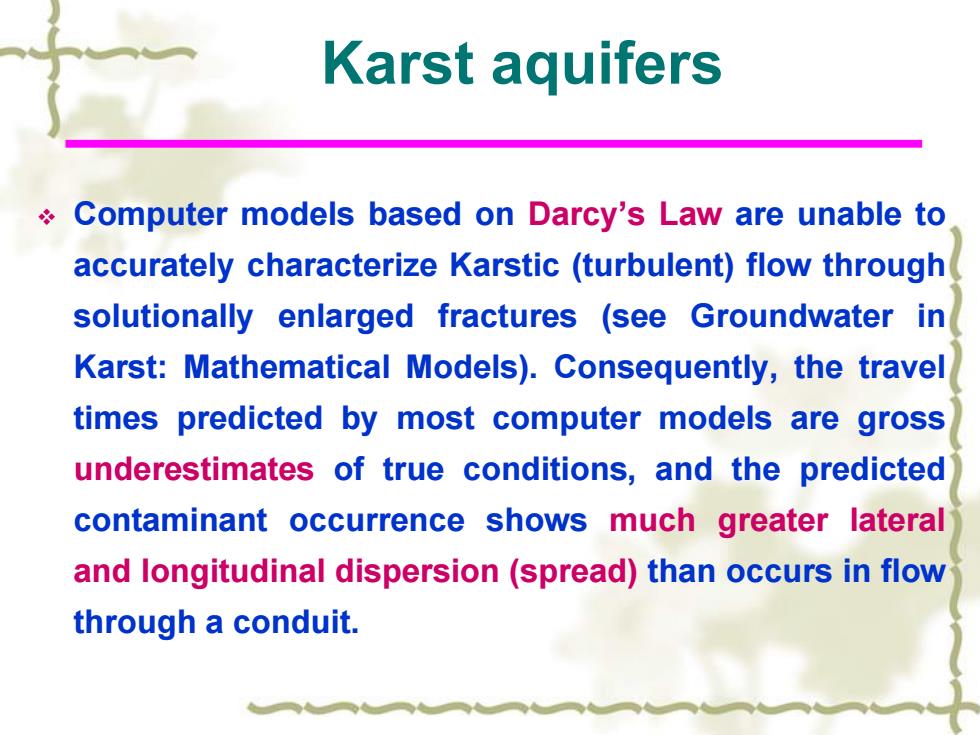
Karst aquifers Computer models based on Darcy's Law are unable to accurately characterize Karstic(turbulent)flow through solutionally enlarged fractures (see Groundwater in Karst:Mathematical Models).Consequently,the travel times predicted by most computer models are gross underestimates of true conditions,and the predicted contaminant occurrence shows much greater lateral and longitudinal dispersion(spread)than occurs in flow through a conduit
Computer models based on Darcy’s Law are unable to accurately characterize Karstic (turbulent) flow through solutionally enlarged fractures (see Groundwater in Karst: Mathematical Models). Consequently, the travel times predicted by most computer models are gross underestimates of true conditions, and the predicted contaminant occurrence shows much greater lateral and longitudinal dispersion (spread) than occurs in flow through a conduit. Karst aquifers
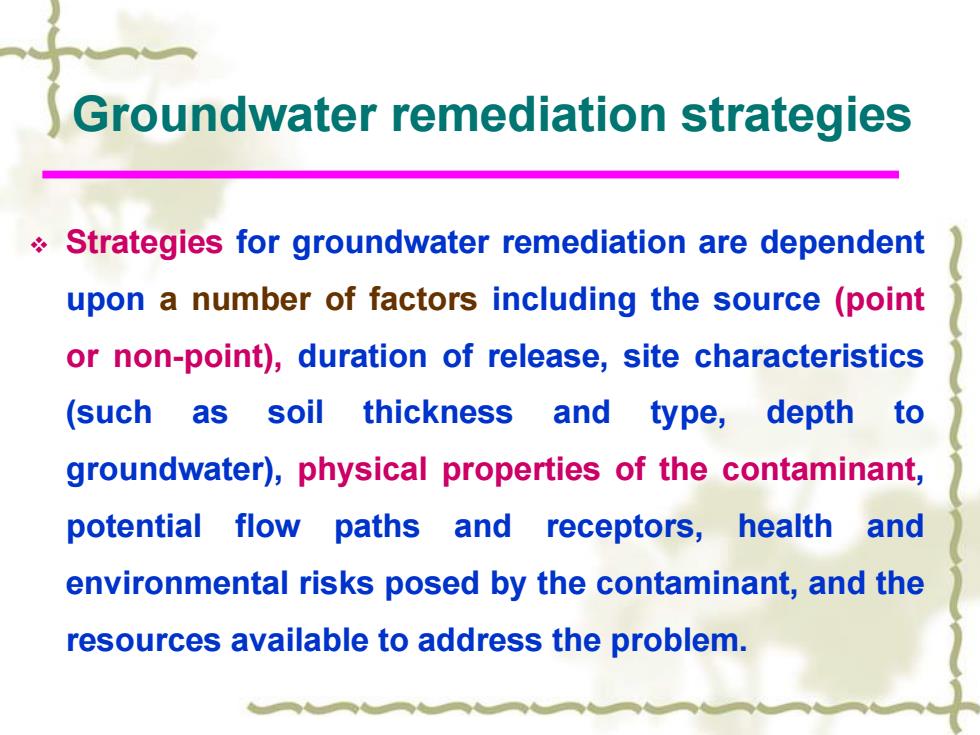
Groundwater remediation strategies Strategies for groundwater remediation are dependent upon a number of factors including the source(point or non-point),duration of release,site characteristics (such as soil thickness and type,depth to groundwater),physical properties of the contaminant, potential flow paths and receptors,health and environmental risks posed by the contaminant,and the resources available to address the problem
Groundwater remediation strategies Strategies for groundwater remediation are dependent upon a number of factors including the source (point or non-point), duration of release, site characteristics (such as soil thickness and type, depth to groundwater), physical properties of the contaminant, potential flow paths and receptors, health and environmental risks posed by the contaminant, and the resources available to address the problem